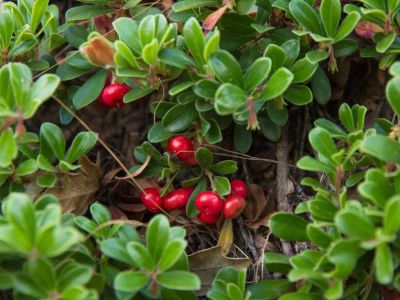What is a Bearberry?
Bearberry (Arctostaphylos uva-ursi) is a low-growing ground cover that usually tops out between 6 and 12 inches (15-31 cm.). The flexible stems sport teardrop-shaped, leathery leaves in dark green. You’ll find a small amount of white or pale pink waxy flowers between March and June. Bearberry grows groups of cherry red berries that measure just under ½ inch (1 cm.) across. A lot of wildlife will eat these berries, but the plant gets its name because bears absolutely love them.
Growing Bearberry Ground Cover
If you have a large plot of poor soil and need to landscape it, then bearberry ground cover is your plant. It thrives on soil poor in nutrients and sandy soil that has a hard time supporting other ground covers. Plant it in full sun or partial shade, in spots where it will have space to spread. While bearberry is slow to grow in the first year, it will spread rapidly once established to create mats that fill a lot of space. Since bearberry will slowly spread over your landscaping in the beginning, you can propagate it to create more plants if you want to fill in the spots quicker. Start new plants by clipping off stems and dipping them into rooting hormone powder, then planting them in moist sand to root. A slower method is growing bearberries by collecting and planting the seeds. Store them in the refrigerator for about three months before planting, and rough up the outside of each seed with a file before you bury it in the soil. Use bearberry on hillsides or over rocky ground that needs coverage. It’s ideal for use as ground cover underneath shrubs or around trees. Plant it along a rock wall and it will cascade down over the edge, softening the look of your landscape perimeter. If you live near the ocean, bearberry is salt-resistant, so use it as a seaside ground cover. Once established, bearberry care is minimal with exceptional to occasional watering.
